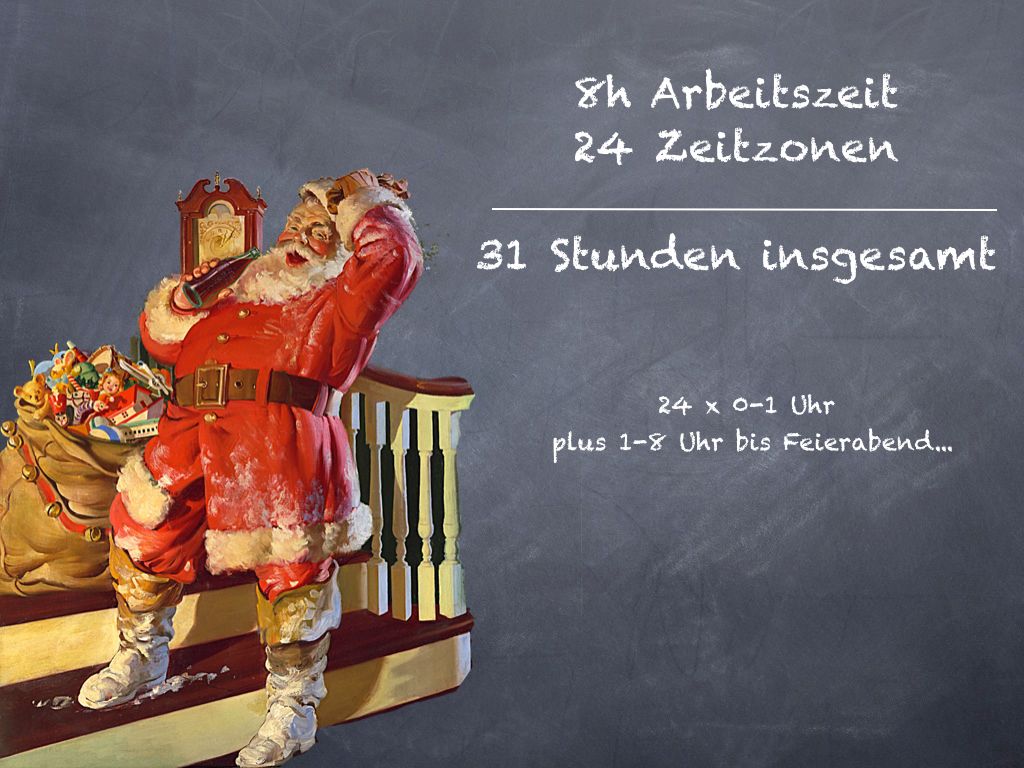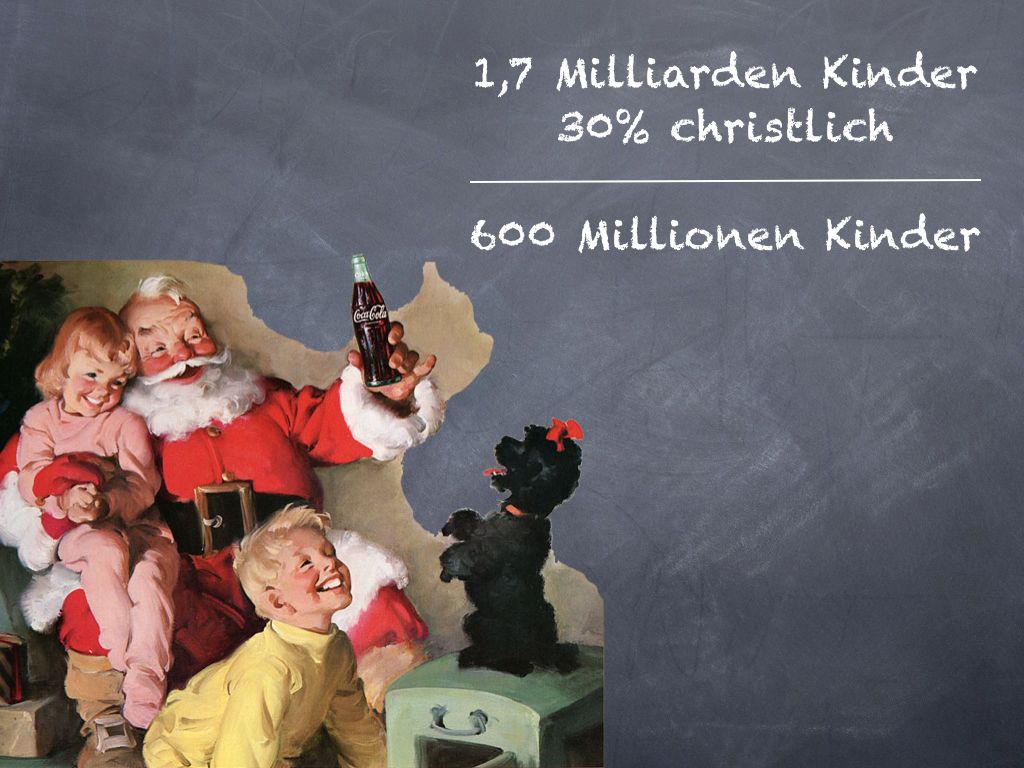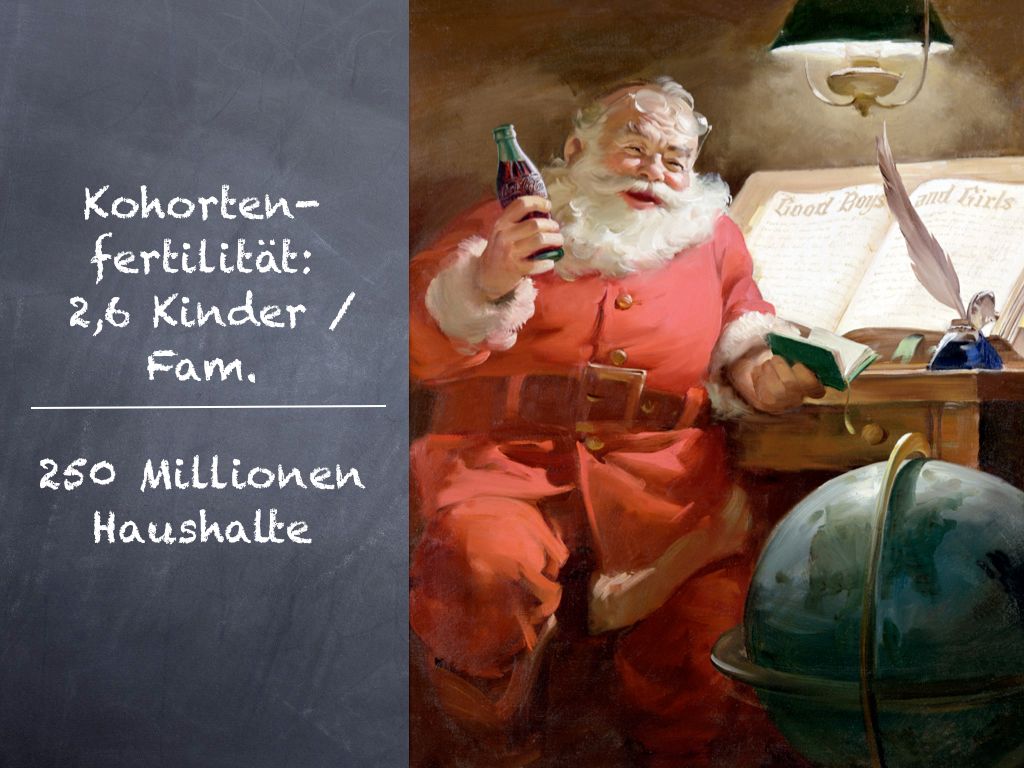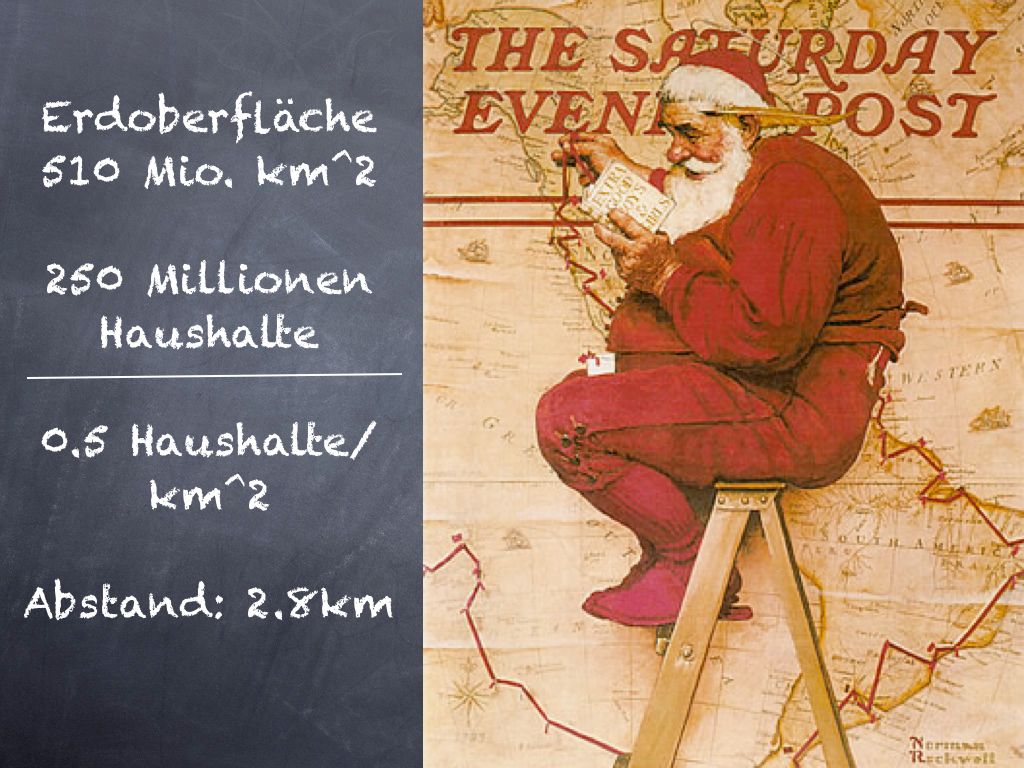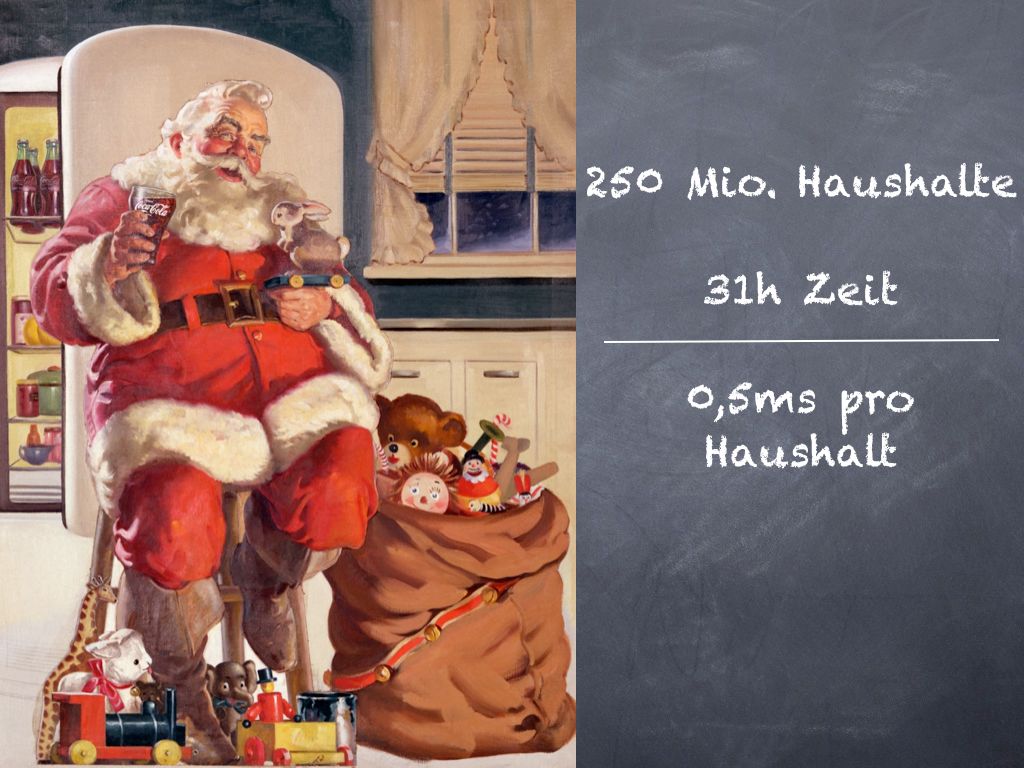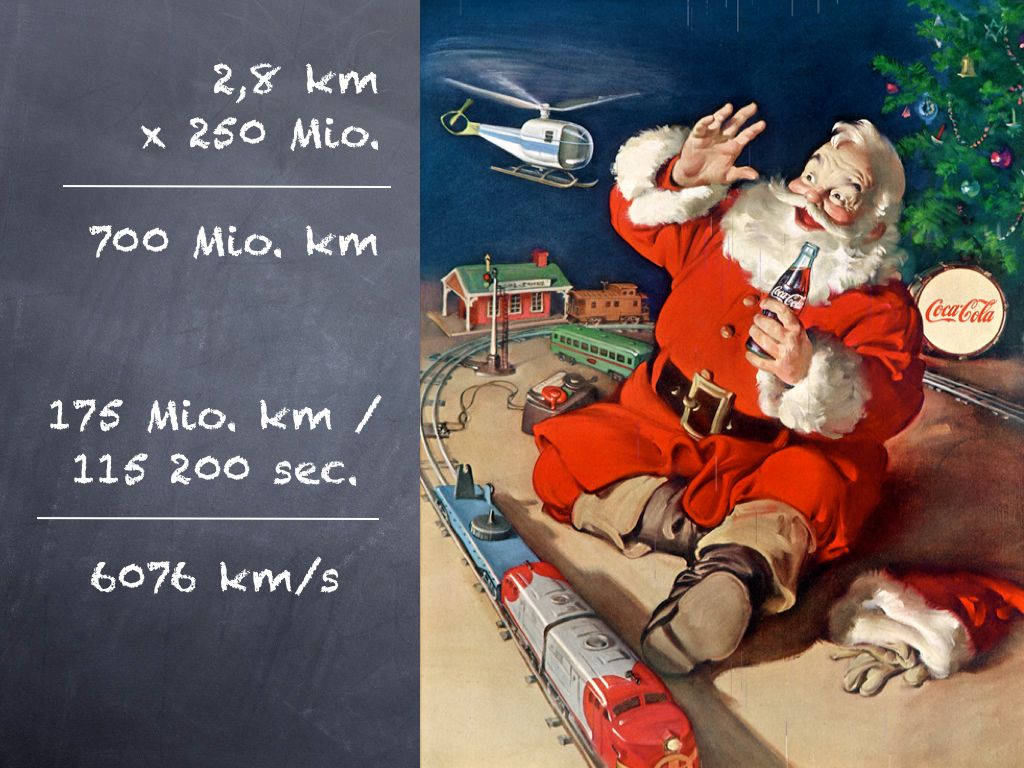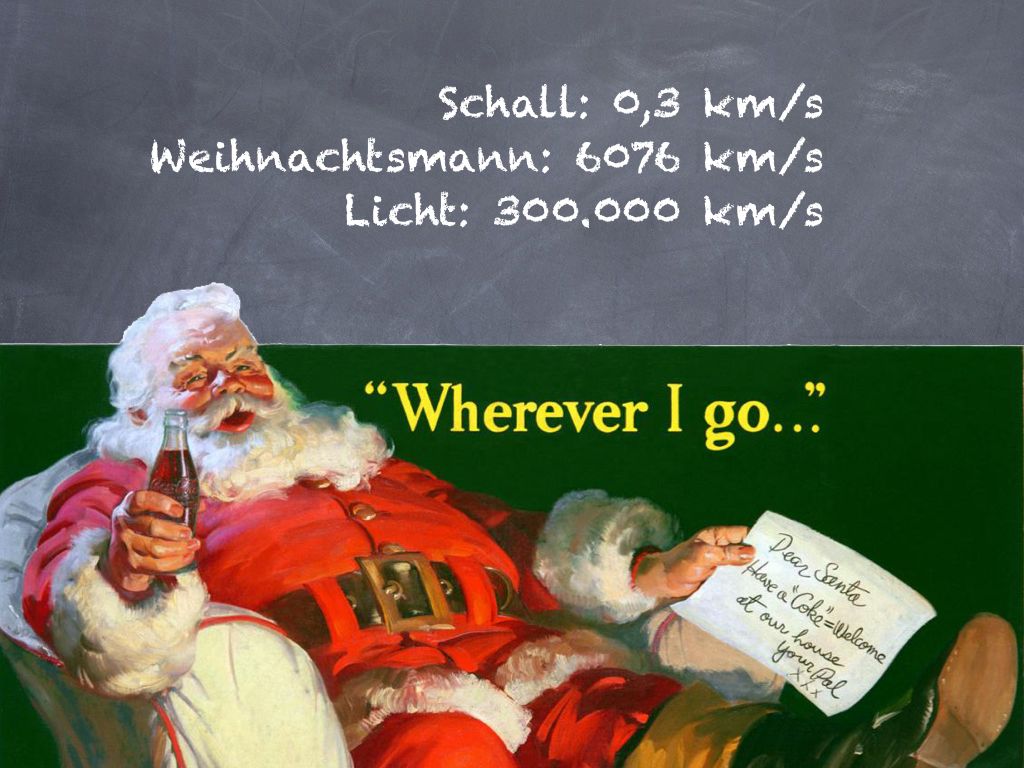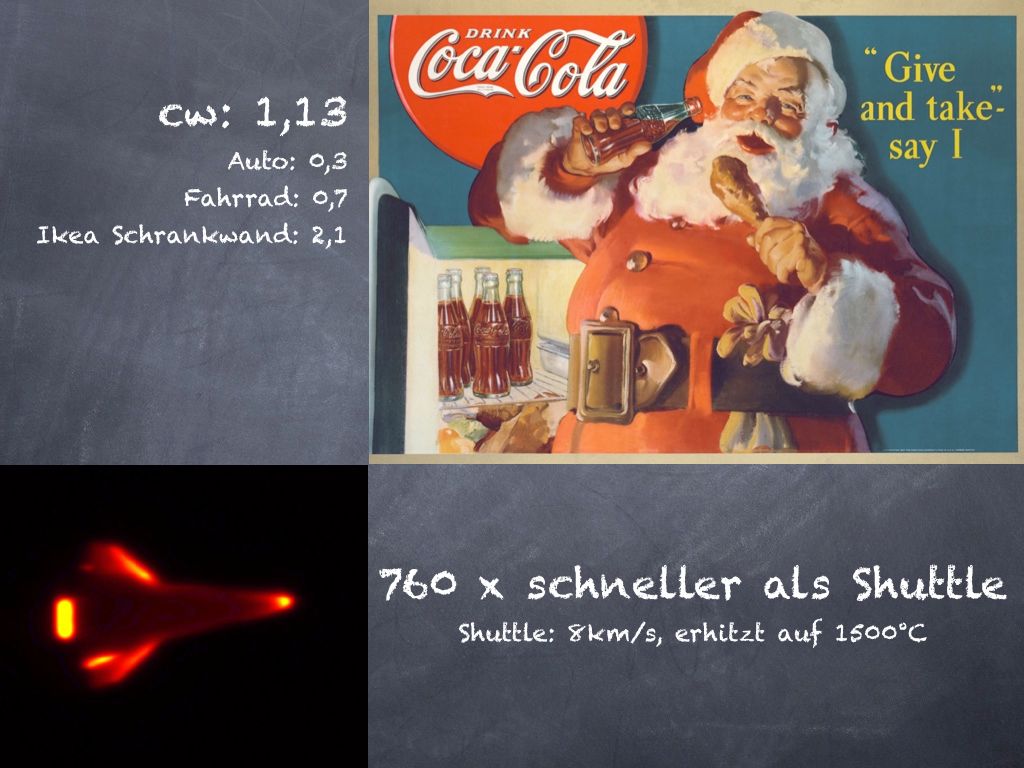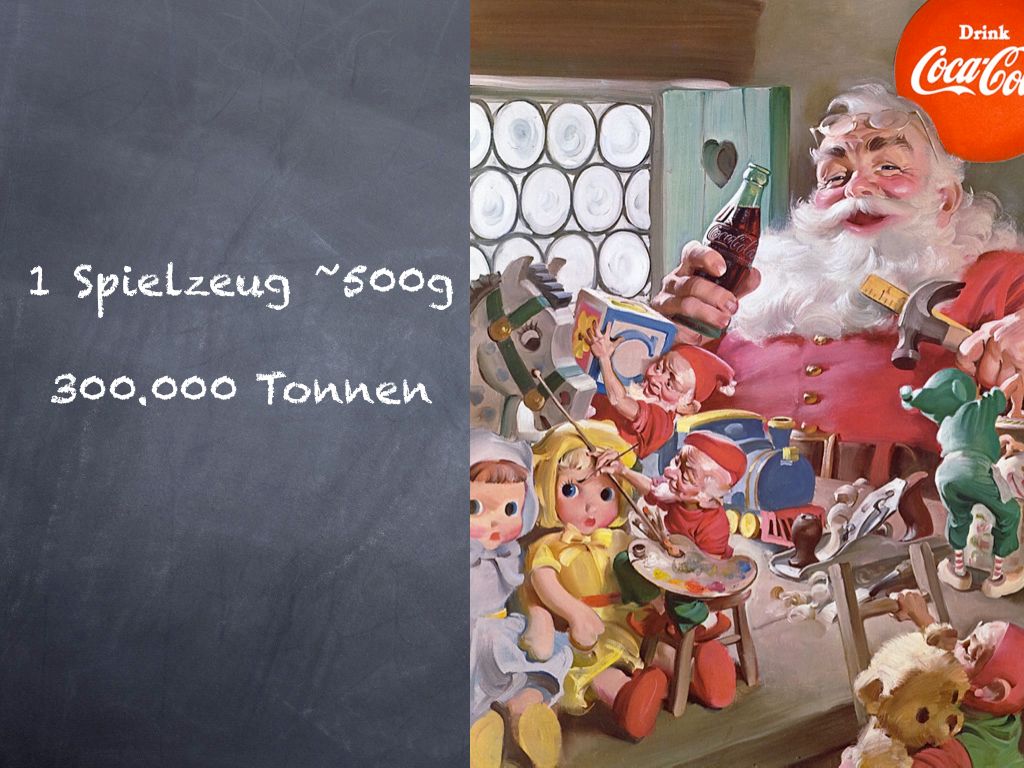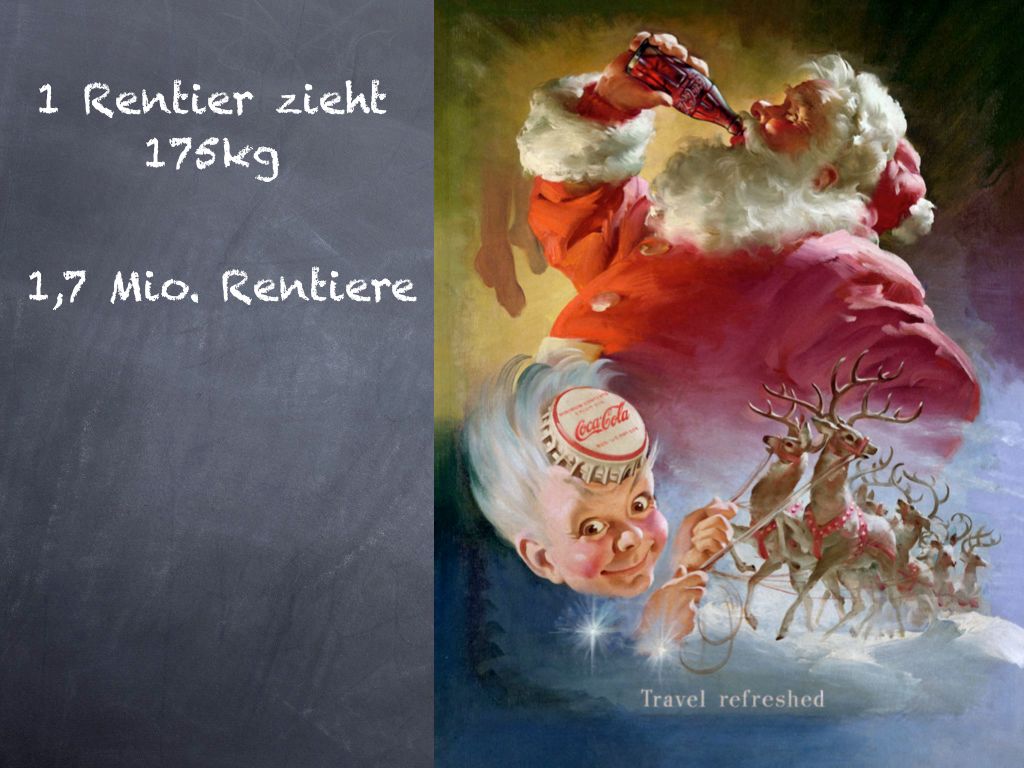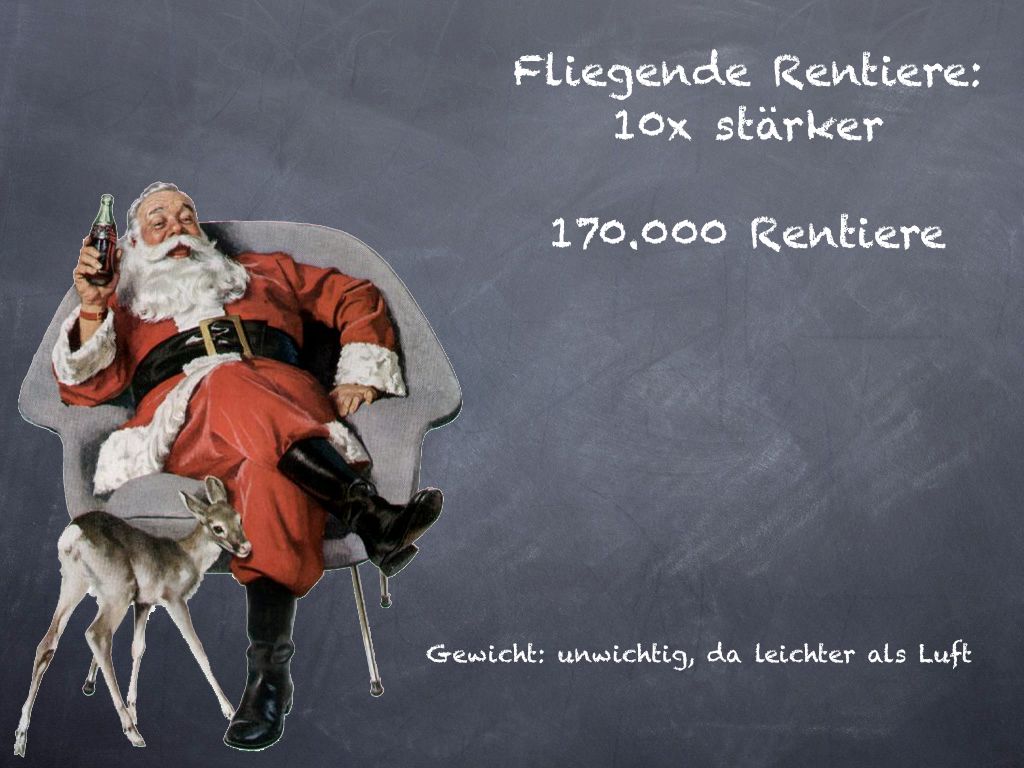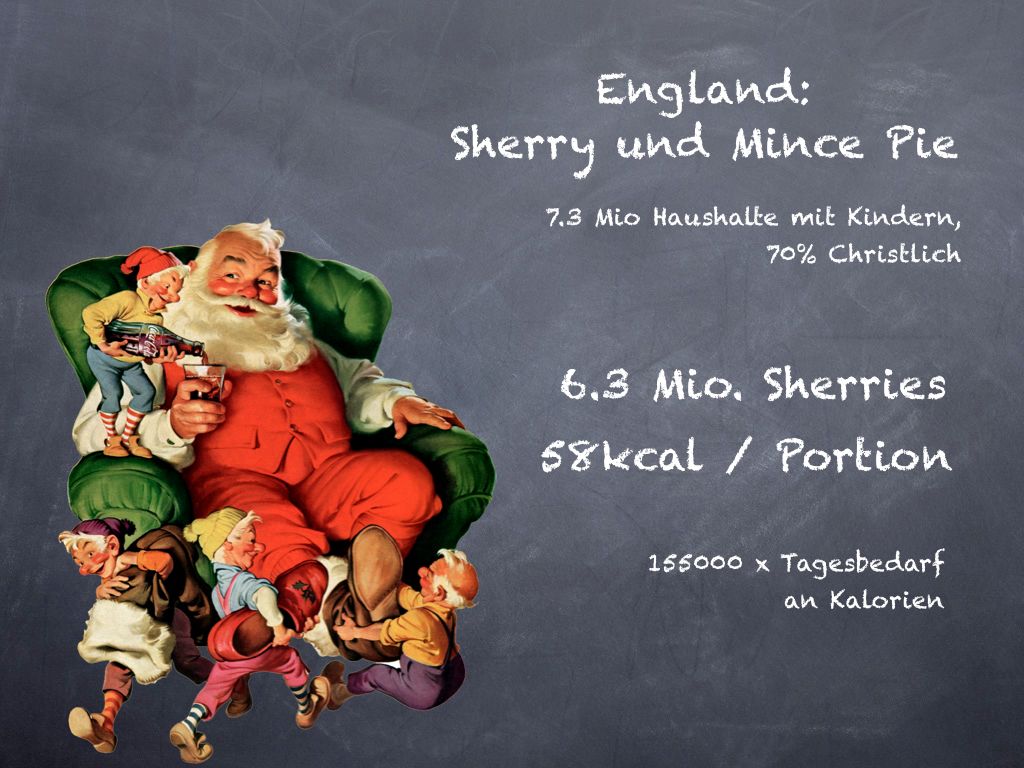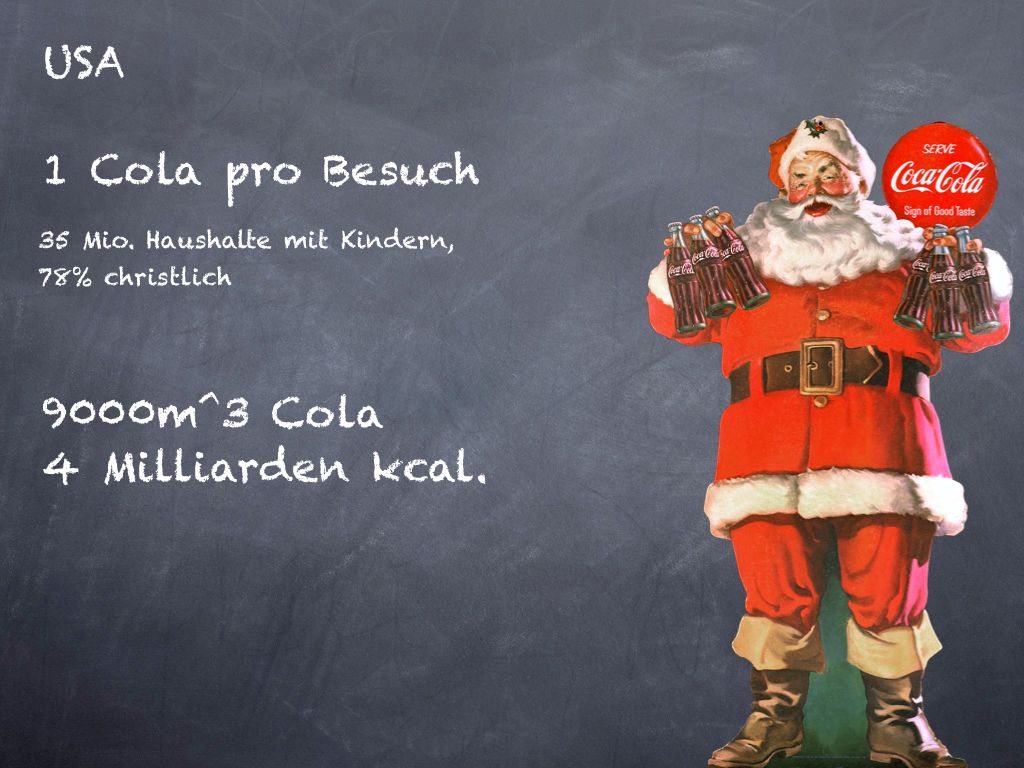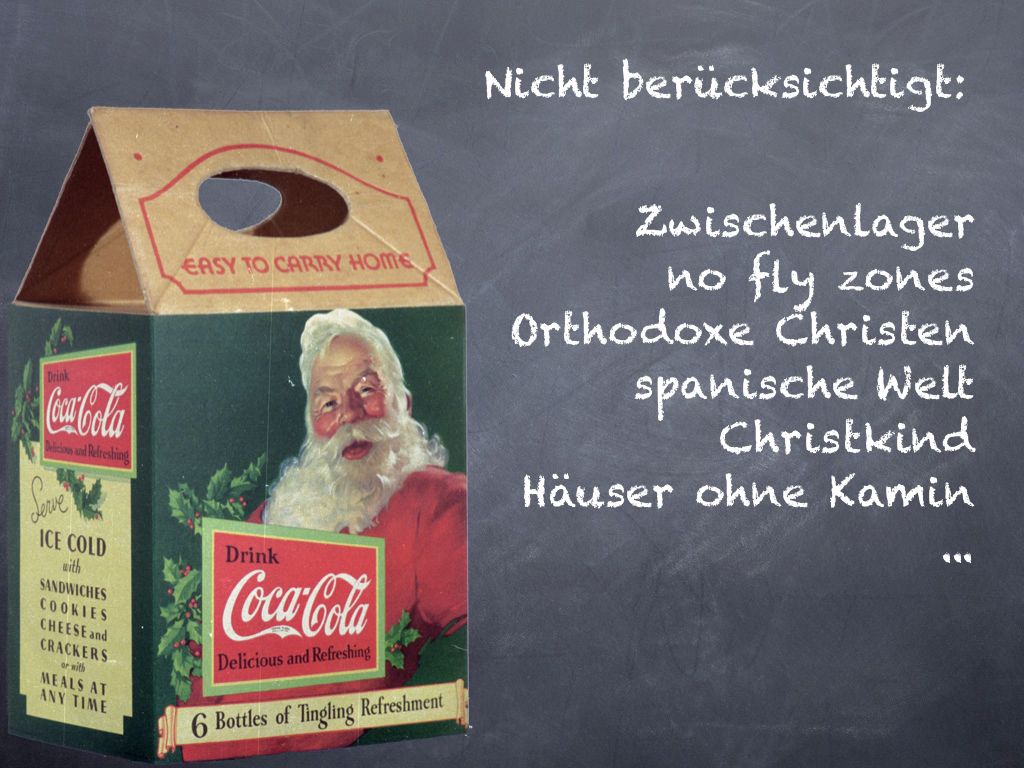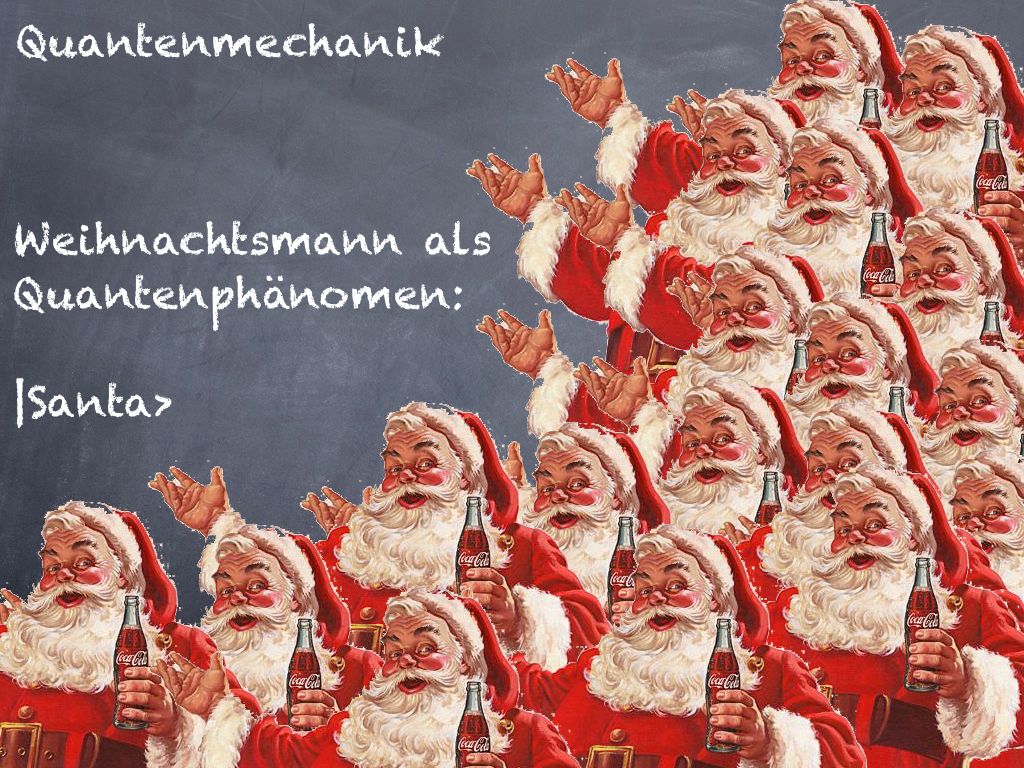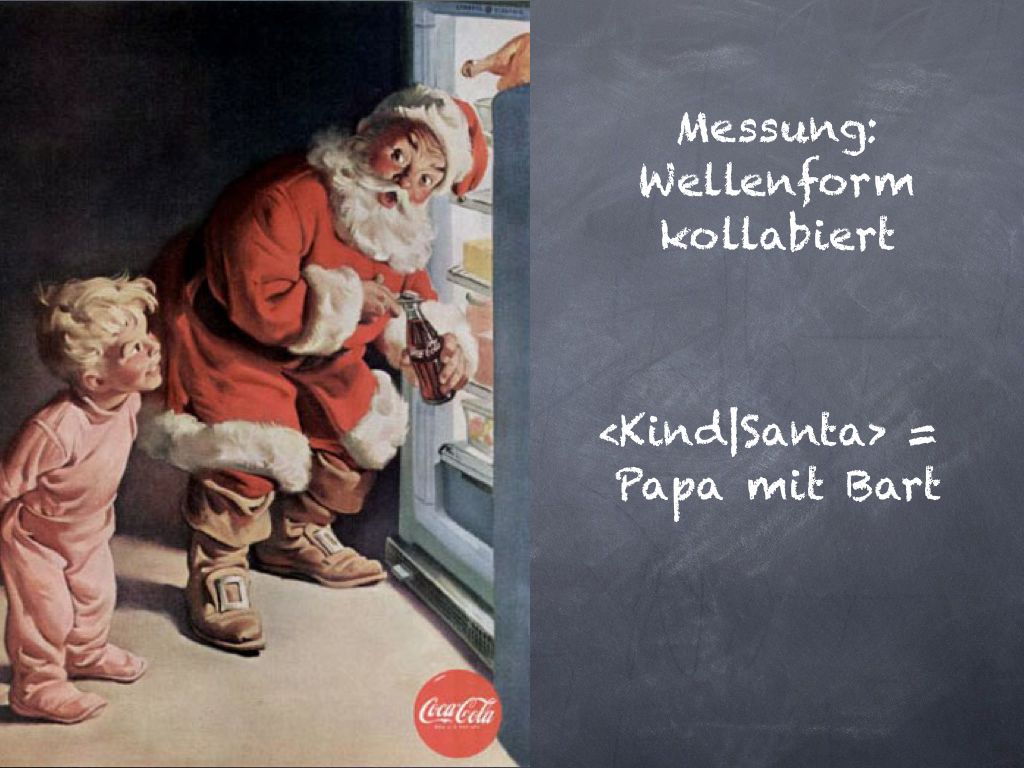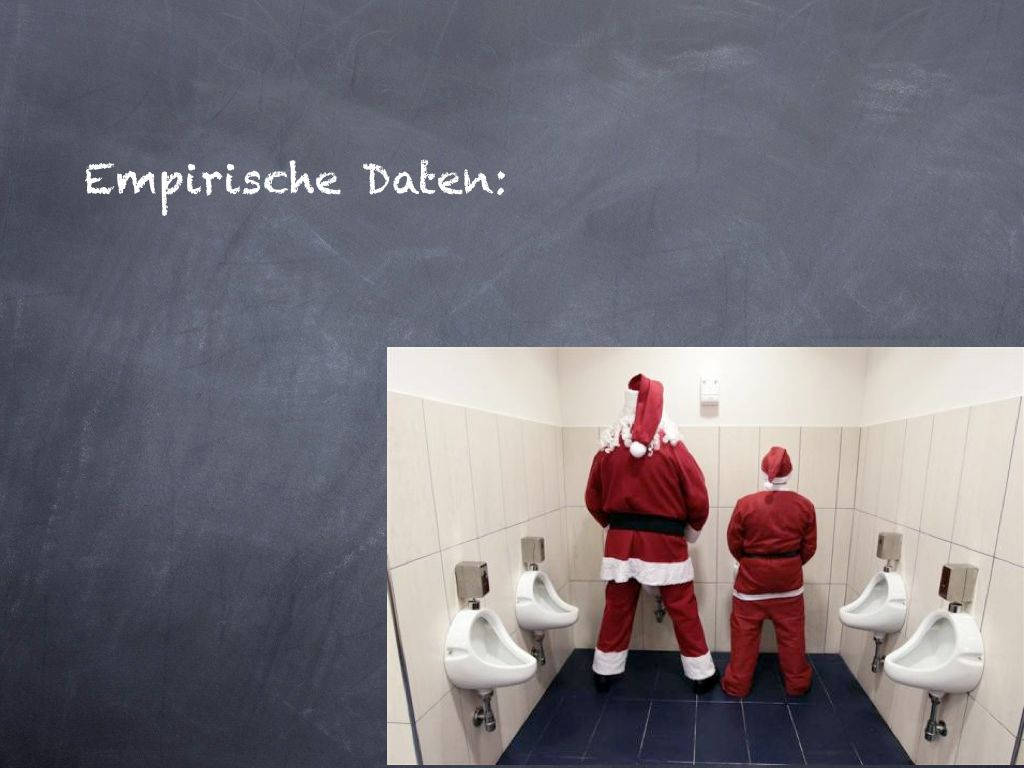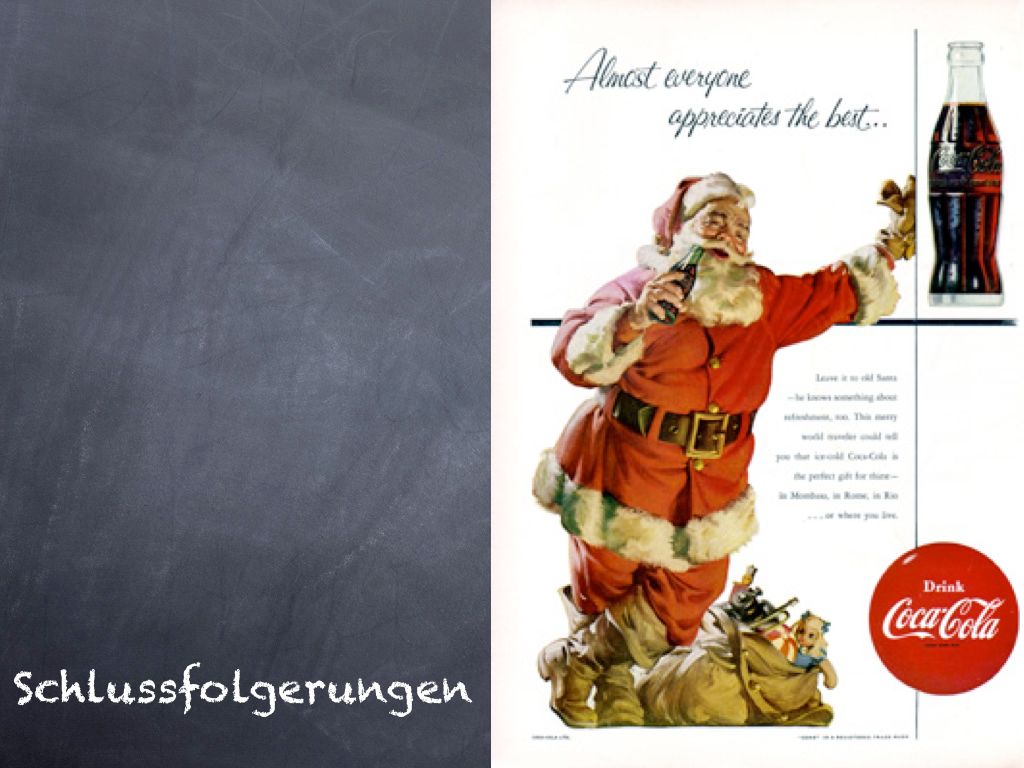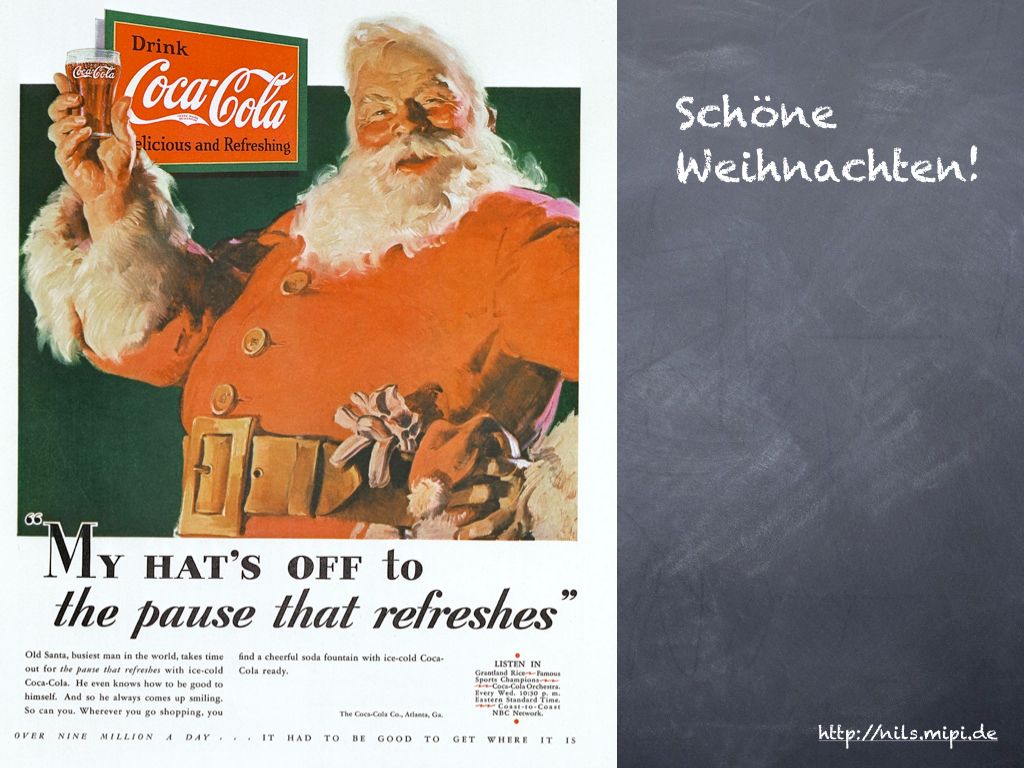Some time ago I volunteered to do a talk at the Erlangen Pecha Kucha Night, thinking it would be some time next year. Well, now it turned out to be on December 23rd…
So I had to change my mind and come up with something christmassy. Every year on the intarwebs you find numbers if Santa Claus can make it around to all children, what it takes, how many reindeers he need etc. So this is the summary of these theories, with numbers double checked.
How much time does Santa Claus have: we suppose he starts in Tonga and works westwards, maximizing the use of timezones. He starts at midnight of the 25th and finishes working at 8 A.M. to get home for breakfast. This gives him 31 hours: 24 times from midnight to 1 o’clock in each time zone plus the seven hours from one to eight o’clock.
Next we assume that he delivers the presents for all christian children. Muslim, Hindu, atheist etc children don’t get presents or get them delivered by a different person, even if they are as good or bad as christian kids. According to the UN there are 1.7 billion children, 30% of them are christian – which gives us 700 million children.
With a fertility rate of 2.6 children per family on average, we’ll have 250 million households. Assuming that each household has at least one good kid, or to be generous (it’s Christmas after all) , that every kid is good, Santa will have to visit all these households.
Earth has a surface of 510 million km^2. Assuming that the households Santa has to visit are distributed evenly on the globe, this gives a density of 1/2 household per square kilometre. From that we get an average distance of 2.8 km between the households.
Santa has to visit 250 million households in 31 hours, or 115.200 seconds. Which leaves halve a millisecond for parking the sleigh, dismounting, jumping in the chimney, depositing the presents, getting back through the chimney and driving the sleigh to the next house. As this is pretty short we might assume Santa uses some kind of laser guided present dropping system which he can operate at full speed of the sleigh.
Santa has to travel in total 700 million km (2.8km between houses times 250 million houses). This gives him an average speed of slightly above 6000km/s, which is 20.000 times the speed of sound.
For comparison: the speed of sound is 0.3 km/s, Santa is at 6076 km/s and the speed of light is whopping 300.000 km/s. Which is good, at roughly 2% of the speed of light we do not need to take the theory of relativity into account and can still calculate using classical mechanics (which is complicated enough if you go for ultrasonic speeds).
The drag coefficient for Santa and his sleigh are found on the intarwebs being 1.13. A modern car has 0.3, a bike 0.7 and a Ikea shelf has 2.1 (assuming that it is the shape of a long cuboid). Santa is travelling at a speed 760 times faster than the shuttle at re-entry into earth’s atmosphere. The shuttle reaches 8km/s and heats up to 1500°C, so Santa will get pretty warm as well. A possibility for cooling will be shown later.
How much weight does Santa need to carry around? Judging from Amazon’s top ten list, most things given as christmas presents weigh about 500 grams. Assuming each kid gets one present, we have 300.000 tons in total, the equivalent of four cruise liners (QE2 sized).
A normal reindeer can pull something like 175kg, something like 3/4 of it’s own mass. To pull 300.000 tons Santa then needs 1.7 million reindeers, which is a little more than the Dasher-Dancer-Prixen-Vixen-etc bunch we all know. Christmas carols usually only refer to them, if you would refer to all you wouldn’t finish singing before new years eve…
BUT: as we all know, Santa’s reindeers can fly, so they are special. Let’s assume that they can pull ten times more than a normal reindeer, which leaves us only with 170.000 reindeers. Now it get’s a bit more realistic! Do we need to take their weight into account as well? No, as they can fly they are lighter than air and therefore the weight can be neglected.
Now comes the really hard stuff: in Britain, it’s tradition to leave a sherry and a mince pie for Santa. Britain has 7.3 million Households with children, 70% of them are christians. This means Santa has to drop down 6.3 million sherries and mince pies. With 58 kcal per serving, this leads to an intake of 155.000 times the recommended amount of calories per day in just Britain. Leaving Britain, Santa will be seriously drunk and with all the calories probably close to a heart attack.
After the flight over the Atlantic comes the next attack on Santa’s health. In the US it used to be common to leave a glass of milk and a cookie for Santa. As you should be brainwashed by all the coke ads now, let’s assume he gets a can of coke at each house. With 35 million households with children, 78% of them being christian (data from US census), this leads to an intake of 9000 cubic metre of coke or a total of 4 billion calories. But as some suggested, all this liquid can be used to cool down the sleigh from air friction heat up and the remaining sugar (900 tons!) can be used to fuel the flying reindeers (which probably will get hyperactive from pure sugar, but that’s even better for christmas night).
In this classical mechanic treatment we did not consider some points:
- Santa might have deposits on each continent or each country, so he does not have to carry around all presents all the time. But this leads to the problem of re-stocking the sleigh, which costs time. He might have a couple of already loaded sleighs, each with some 50.000 reindeers and just change sleighs…
- What about no-fly zones, how does he get in there? Or is this then outsourced to DHL and UPS?
- Orthodox christians and the spanish world get’s their presents only on January 6, so this reduces the amount of children to deliver to quite a lot.
- Another reduction comes from some regions in Germany and France being served by the “Christkind”
- How does Santa deliver presents in houses without a chimney?
- …
Now if we leave classical mechanics there is a much more elegant solution to the problem. We treat Santa as a quantum mechanical wave form… As you know from your elemental QM course, a quantum mechanical object (such as a particle) can pass multiple places at the same time, experimentally shown at the double slit experiment. So assuming Santa has a quantum mechanical waveform, he can be at all places at once. If the chimney placement is considered as a grid where Santa can interfere, we also can explain how we get maxima of Santaness in front of the chimneys and minima everywhere else.
From the double slit experiment we also remember that an observation will lead to the waveform to collapse. When you try to detect which slit the particle passes, it only passes one at a time and the interference pattern disappears. The same needs to be considered for Santa: as soon as you observe him, his waveform collapses into one to the ground states of Santa, which usually is described as “Dad with a fake beard”. This gives now a scientific explanation why children should never try to stay up and watch Santa, as it would lead to a collapse of the waveform and might result in no presents at all by introducing a minimum of Santaness measured at the particular chimney.
Now let’s check with real measurements: Children get presents at christmas, so there must be a Santa Claus. Santa is also observed at multiple places at the same time before christmas (see picture), and we have not heard of a drunken obese guy (6.3 mio Sherries) crashing into houses with 170.000 reindeers at supersonic speed. So the Quantum Mechanical approach is favoured by empirical data…
To summarise, we have shown that a classical treatment of Santa leads to multiple questions. A quantum mechanical approach leads to a better explanation of multiple Santa related phenomena. However the health problems of Santa remain, due to the high intake of alcohol and calories in a single night. Why Santa is still alive since first sightings in the 18th century has to remain a topic for further studies.
So: Merry Christmas to everybody – and – Yes, Virginia, there is a Santa Claus!
Note: this is based on various sources on the intarwebs, mainly some Articles in The Telegraph:
- http://www.telegraph.co.uk/topics/christmas/8189078/Christmas-history-The-First-Noel.html
- http://www.telegraph.co.uk/topics/christmas/6859529/Father-Christmass-Christmas-Eve-in-figures.html
- http://www.telegraph.co.uk/topics/christmas/8188997/The-science-of-Christmas-Santa-Claus-his-sleigh-and-presents.html
- http://jcdverha.home.xs4all.nl/scijokes/2_8.html
- http://www.kuro5hin.org/pages/santa.txt
The coke ads were stolen from: http://koikoikoi.com/2009/12/20-vintage-santa-claus-illustrations-by-coca-cola/
